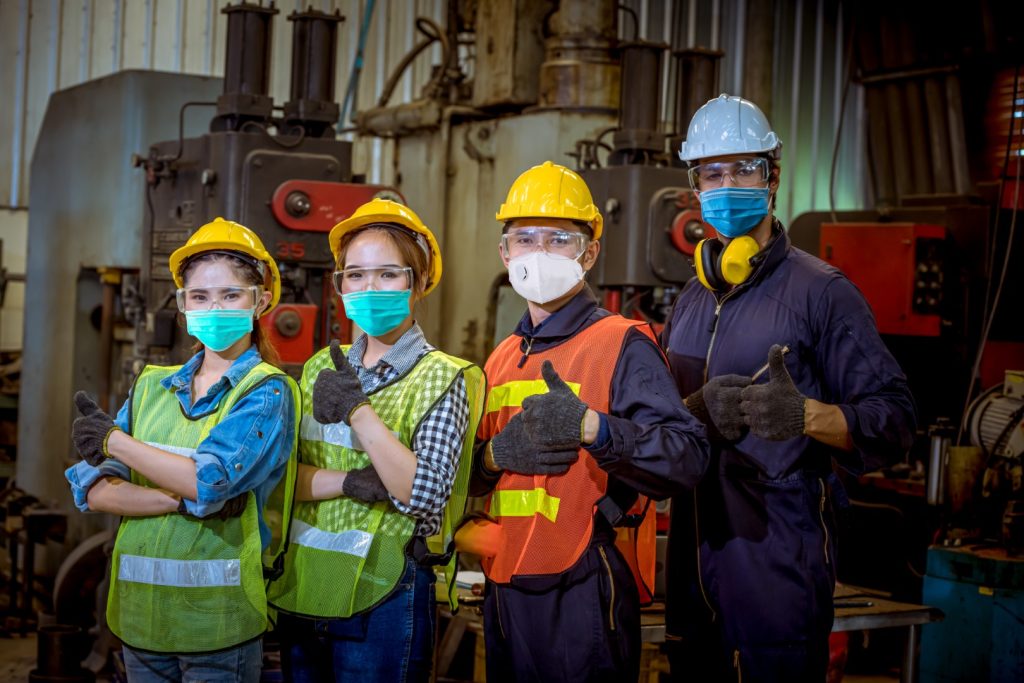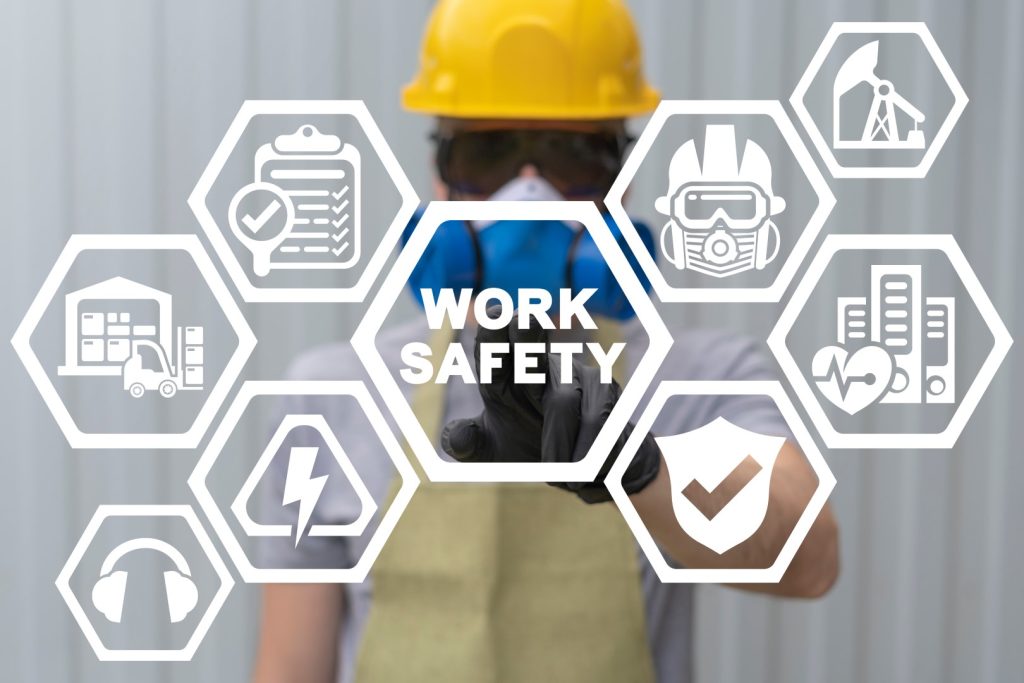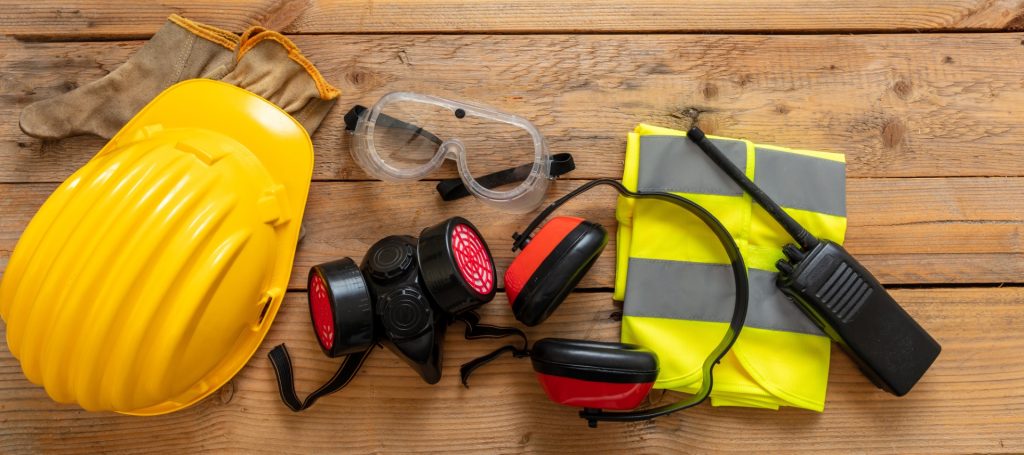
Emre METİN
STRATEGY AND BUSINESS DEVELOPMENT DIRECTOR
The Role of Conformity Assessment in Enhancing Occupational Health and Safety through Personal Protective Equipment (PPE) from the Perspective of the European Union
Introduction
Personal Protective Equipment (PPE) is crucial for the safety and health of workers in various and often hazardous environments of modern workplaces. From heavy industrial settings to laboratory environments, the correct use of PPE such as helmets, protective gloves, goggles, and safety shoes is essential to protect individuals from potential risks. Ensuring that this equipment adheres to the highest safety and efficacy standards is governed by stringent EU regulations and a mandatory conformity assessment process.
At the heart of this regulatory framework lies the CE marking, a seal that indicates conformity of a product to EU safety, health, and environmental protection standards. This mark is not merely a symbol but a declaration by manufacturers that their products meet all legal requirements of the European market in these critical areas. The process of obtaining and maintaining this certification involves rigorous and systematic assessments that ensure PPE can withstand the conditions for which it is designed and provide the expected level of protection.
These standards are crucial for businesses for market access and consumer confidence. For users, they reduce the risk of injury in the workplace by providing assurance that protective equipment will function effectively. Thus, EU regulations and the conformity assessment process play a fundamental role in occupational health and safety dynamics, continuing the commitment to protect workers both in Europe and beyond.

Background of PPE Regulation
The regulatory environment for Personal Protective Equipment (PPE) in the European Union is extensively outlined in EU Regulation (EU) 2016/425. This regulation, which came into effect on April 21, 2018, replacing the former Directive 89/686/EEC, signifies a significant shift aimed at increasing user safety and standardizing PPE requirements across all member states. The regulation is designed to meet the varied and often stringent demands of workplace safety by ensuring that all PPE sold within the EU adheres to strict safety and health standards.
EU Regulation (EU) 2016/425 categorizes PPE into three different groups based on the level of risk they protect against, ranging from minimal risks, such as providing protection against superficial damage like garden gloves, to complex risks, such as providing protection against lethal dangers or irreversible harm like fall arrest systems or respiratory protective devices. This classification helps clarify the necessary conformity assessment procedures that each type of PPE must undergo before being deemed safe for market distribution.
One key aspect of this regulation is the mandatory involvement of Notified Bodies appointed by EU countries to assess the conformity of products before they are placed on the market. These bodies are responsible for verifying that PPE meets all relevant EU requirements, focusing on aspects such as design, production, and functional capabilities. The regulation also emphasizes the traceability of PPE, requiring all products to be clearly marked for ease of tracking throughout the production and distribution chains.
By setting high standards for compliance and providing rigorous assessment processes, EU Regulation (EU) 2016/425 aims not only to protect the health and safety of users but also to increase confidence in the PPE market by ensuring that products are both effective and reliable. This is crucial for promoting a safer working environment across various sectors and enhancing the well-being of millions of workers across Europe.
A Detailed Look at Conformity assessment for PPE
Conformity assessment is a systematic process required to ensure the conformity of Personal Protective Equipment (PPE) to specified EU regulations. This multifaceted process ensures that PPE provides the necessary level of protection against occupational hazards by verifying both the design and manufacturing quality of PPE. Conformity assessment for PPE involves several critical steps and modules, each designed to meticulously test and verify the safety standards of the equipment.
The level of conformity assessment required for Personal Protective Equipment (PPE) correlates with the severity of potential risks and the consequences of inadequate PPE.
EU Regulation (EU) 2016/425 categorizes PPE into three risk categories:
Category I: Documentation of personal protective equipment included in Category I is carried out by the manufacturer, as laid down in Article 10 of the Personal Protective Equipment Regulation, based on the principles of preparing an EC declaration of conformity.
Category II: Documentation of personal protective equipment included in Category II is carried out by the manufacturer, as laid down in Article 9 of the Personal Protective Equipment Regulation, based on the principles of preparing an EC declaration of conformity after the EC type-examination certificate for the model of personal protective equipment has been issued by a notified body.
Category III: Documentation of personal protective equipment included in Category III is carried out by the manufacturer, as laid down in Article 11 of the Personal Protective Equipment Regulation, based on the principles of preparing an EC declaration of conformity after the EC type-examination certificate has been issued for the model of personal protective equipment by a notified body and following the application of quality control procedures for the production system of the personal protective equipment or for conformity to one of the sixth or seventh categories of the same Regulation.

Technical Documentation: The process begins with manufacturers providing comprehensive documentation outlining the design, materials, intended use, and safety features of the PPE. This documentation forms the basis for all subsequent assessments and must detail the methods used to ensure compliance with health and safety standards.
EU Type Examination (Module B): This is a fundamental component of the conformity assessment process where a Notified Body reviews the technical documentation and samples of the PPE to verify compliance with legal requirements. The examination aims to confirm that the design meets the legal requirements and can effectively protect users as intended. If the PPE passes this assessment, the Notified Body issues an EC Type Examination Certificate validating the design of the product.
Conformity to Type (Module C): Following the type examination, manufacturers must ensure ongoing conformity during production. This module requires PPE to continuously adhere to the approved type. Manufacturers are responsible for internal production control measures, but these may be subject to surveillance by Notified Bodies to ensure continuous compliance.
Production Quality Assurance (Module D): A more rigorous module may be applied for higher-risk categories of PPE. Module D includes regular surveillance of the production process, including unannounced factory inspections and product testing, by the Notified Body. This continuous oversight ensures strict adherence to approved specifications throughout the production process.
Declaration of Conformity and CE Marking: Following a successful conformity assessment, manufacturers must issue a Declaration of Conformity stating that the PPE meets all EU safety standards and regulations. Subsequently, the CE marking, a visible symbol of compliance, is affixed to the PPE or its packaging. This marking is crucial as it informs users and authorities that the PPE has been certified for sale in the European Market and meets the required safety standards.
Analytical Review and Updates: Conformity assessment is not a one-time process but requires continuous review and updating based on new safety data, technological advancements, or changes in standards. Notified Bodies play a critical role in this ongoing process by re-evaluating and re-validating the compliance of PPE, ensuring that safety is never compromised.
Through these meticulous modules and analytical reviews, the conformity assessment process serves as the backbone of PPE regulation and ensures that every piece of equipment used in the EU not only meets comprehensive safety standards but also continues to do so throughout its lifecycle. This detailed review helps protect the health and safety of millions of workers and provides them with confidence that their protective equipment will perform effectively against occupational hazards.

Link to Occupational Health and Safety
The role of conformity assessment in the context of Personal Protective Equipment (PPE) is closely intertwined with the broader goals of promoting occupational health and safety (OHS) in workplaces across the European Union. By ensuring that PPE adheres to strict safety standards and undergoes rigorous assessment processes, EU regulations play a fundamental role in reducing workplace accidents and protecting the well-being of workers.
Occupational Health and Safety Connection
The role of conformity assessment in the context of Personal Protective Equipment (PPE) is very important for advancing Occupational Health and Safety (OHS) standards across various sectors. This process ensures that PPE not only meets certain design and manufacturing standards but also performs effectively in protecting workers from occupational hazards. The direct impact of these assessments on workplace safety is significant and multifaceted, supported by stringent standards symbolized by the CE marking as specified by EU regulations.
Ensuring Reliability and Safety: The primary purpose of conformity assessments is to verify that PPE operates appropriately under real-world conditions. This includes testing PPE against potential risks and ensuring it can withstand specific hazards it is designed to protect against, such as chemical exposure, electrical hazards, or mechanical impacts. PPE manufacturers confirm that their products meet the necessary protection levels by complying with EU standards and obtaining the CE marking, thereby directly contributing to user safety and well-being.
Building Trust Among Workers: Workers equipped with CE-marked PPE are assured that their equipment meets the highest safety standards. This assurance is crucial for worker morale and productivity, as individuals are more likely to perform their tasks effectively when they feel secure. Additionally, as workers understand that their equipment is proven to be effective and reliable, this confidence also encompasses compliance with safety protocols.
Legal and Compliance Frameworks: EU regulations require all PPE sold within the Union to undergo conformity assessment and bear the CE marking. This legal framework ensures a standardized approach to safety across all member states, promoting a level playing field for businesses and ensuring that all workers receive equal protection regardless of the member state they operate in. Mandatory compliance with these regulations helps prevent workplace accidents and reduce the frequency of occupational diseases.
Continuous Improvement in Safety Standards: The conformity assessment process is not static; it evolves in response to technological advancements, changes in workplace practices, and emerging safety data. This dynamic approach aids continuous improvement in PPE development and performance, ensuring that standards for protecting workers align with the latest scientific research and industrial innovations, thereby enhancing overall workplace safety over time.
Reduction in Occupational Hazards and Incidents: Consequently, the rigorous testing and certification process involved in conformity assessment leads to a tangible reduction in workplace injuries and deaths. Adherence to strict EU standards minimizes the risk of PPE failure, thus reducing the likelihood of accidents. This protective effect is particularly important in high-risk sectors such as construction, manufacturing, and chemical processing, where the quality of PPE can directly impact the outcome of safety incidents.
In summary, the conformity assessment, EU regulations, CE marking, and occupational health and safety connection ensure uniform safety standards for protective equipment used across various workplaces in Europe, thus protecting the health and safety of millions of workers. Conformity assessment acts as a cornerstone of job safety, adding reliability and security to every piece of PPE that reaches the market.
Impact of Non-Conformance
The effects of non-conformance in the production and certification of Personal Protective Equipment (PPE) are profound and multifaceted. If PPE fails to meet established EU standards and carry the necessary CE marking, the risks are not only regulatory but also directly affect the safety and health of workers. Non-compliant PPE may fail under conditions it is supposed to protect against, leading to preventable injuries or deaths. From a legal perspective, businesses face serious consequences including hefty fines, potential lawsuits, and damage to their reputation. These outcomes underscore the vital importance of adherence to conformity assessments, which ensure that every equipment piece meets the stringent requirements set by EU regulations.
International Perspectives and Best Practices
Globally, approaches to PPE standards and conformity vary, yet the fundamental principle of protecting workers remains consistent. In the United States, the Occupational Safety and Health Administration (OSHA) mandates that PPE meet certain safety standards through rigorous testing and certification, similar to EU practices. In Asia, countries like Japan and South Korea have regulatory frameworks that emphasize quality assurance and safety effectiveness of PPE. Best practices in these regions include regularly updating safety standards based on technological advancements, rigorous training programs for workers on the proper use of PPE, and active participation of industry stakeholders in shaping regulatory frameworks. These practices ensure that protective equipment not only complies with current safety regulations but also adapts to new workplace challenges and hazards.
Conclusion
In the context of occupational health, Personal Protective Equipment conformity assessment is indispensable. The process, which ensures that PPE meets the highest standards of safety and effectiveness, is a critical component in protecting workers from known and unforeseen workplace hazards. It reinforces confidence in existing safety mechanisms, enhances compliance with international safety standards, and supports a culture of safety across industries. Looking to the future, the continuous evolution of conformity assessments and adaptation to new safety data and technology will remain key to advancing occupational health and safety globally. By maintaining strict compliance and adopting best practices, worker safety can be effectively safeguarded, not only promoting compliance with regulations but also encouraging a proactive approach to workplace safety.









